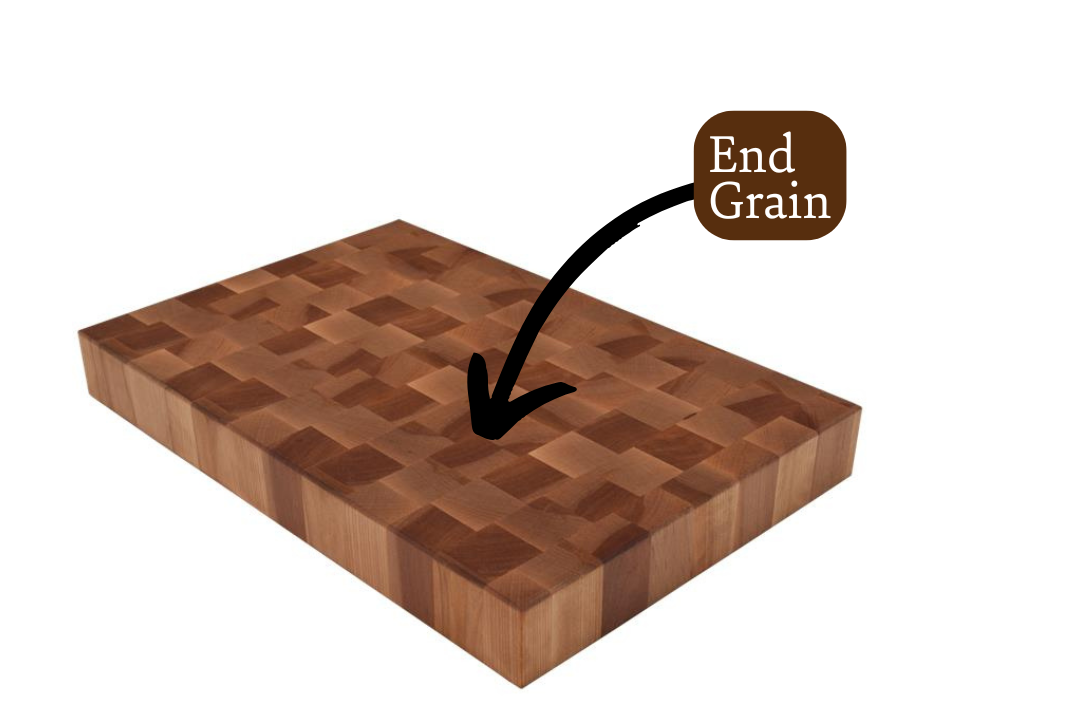Understanding the Different Cuts of Wood
.jpg)
When it comes to woodworking, the type of wood cut you choose can have a profound impact on the final product.
At Atlas Dowel & Wood Products, we understand the importance of selecting the right cut for your project. Whether you’re a seasoned carpenter or a DIY enthusiast, understanding the different cuts of wood is crucial for achieving the desired look, strength, and stability in your work.
In this post, we will delve into the world of wood cuts, exploring the various types and their unique characteristics.

Plain Sawn (Flat Sawn)
Plain sawn wood, also known as flat sawn, is the most common and economical cut. The process involves cutting parallel to the log’s growth rings, resulting in a varied grain pattern with cathedral-like peaks. This cut is popular for its efficiency and yield, as it produces less waste and more boards per log. However, it is more prone to warping and cupping compared to other cuts due to its varied grain orientation. Plain sawn wood is commonly used for furniture, flooring, and cabinetry.

Quarter Sawn
Quarter sawn wood is achieved by first cutting the log into quarters, and then slicing each quarter at a 90-degree angle to the growth rings. This method produces a straight grain pattern with pronounced rays and flecks, adding a unique and attractive aesthetic to the wood. Quarter sawn boards are more stable and less prone to warping and cupping than plain sawn boards, making them a preferred choice for high-quality furniture, musical instruments, and flooring. Additionally, this cut enhances the wood’s resistance to moisture and reduces the likelihood of cracking and splitting.

Rift Sawn
Rift sawn wood is like quarter sawn, but the boards are cut 45 degrees to the growth rings. This results in a straight grain pattern without the pronounced rays and flecks found in quarter sawn wood. Rift sawn boards offer excellent stability and are less prone to warping and cupping, making them ideal for doors, millwork, and fine furniture. However, this cut yields less material per log and is therefore more expensive than plain and quarter sawn cuts.

Live Sawn
Live sawn is a European method that involves cutting straight through the log from one side to the other, resulting in boards that contain a mix of plain, quarter, and rift sawn grains. This method maximizes the yield from each log, reducing waste and making it a sustainable choice. Live sawn wood showcases the full character of the tree, including its growth rings, knots, and variations in grain pattern. It is commonly used for wide plank flooring and rustic furniture, providing a natural and authentic look.

End Grain
End grain cuts expose the ends of the wood fibers, creating a unique pattern that is distinct from other cuts. This type of cut is highly durable and resistant to wear, making it ideal for cutting boards, countertops, and flooring in high-traffic areas. However, end grain is more prone to moisture absorption and requires proper sealing and maintenance to ensure longevity.
Choosing the Right Cut for Your Project
Selecting the right cut of wood is crucial for achieving the desired look and performance in your woodworking project. At Atlas Dowel & Wood Products, we offer a wide variety of wood cuts to suit your specific needs.
Here are some factors to consider when choosing your cut:
Aesthetic Preferences: Consider the grain pattern and visual characteristics of the wood cut. Do you prefer the cathedral peaks of plain sawn wood, the straight grain of quarter or rift sawn, or the rustic look of live sawn?
Stability and Durability: Evaluate the stability and durability required for your project. Quarter and rift sawn cuts offer superior stability and resistance to warping, while end grain provides exceptional durability in high-traffic areas.
Budget: Keep your budget in mind, as some cuts are more expensive due to lower yield and increased labor. Plain sawn wood is typically the most economical choice, while rift sawn can be more costly.
Environmental Impact: Consider the environmental impact of your choice. Live sawn cuts maximize yield and reduce waste, making them a sustainable option.
Discover the Perfect Wood Cut for Your Project with Cincinnati Dowel
Understanding the different cuts of wood is essential for making informed choices in your woodworking projects. Each cut has its unique characteristics, advantages, and disadvantages, influencing the final appearance, stability, and durability of the wood.
At Atlas Dowel & Wood Products, we are committed to providing high-quality wood products and expert guidance to help you select the perfect cut for your needs. Whether you are crafting fine furniture, installing flooring, or working on a DIY project, we have the knowledge and products to ensure your success.
Explore the world of wood cuts with us and bring your woodworking visions to life!
Click here to view our selection of hardwood components now!
For more wood cut tips, follow Atlas Dowel on Facebook and Twitter today!
Happy with the Atlas Dowel difference? Leave us a quick five-star review here!

